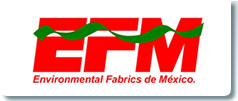Services
Mining Projects
Extractive metallurgy
The science of extractive metallurgy is a specialized area in the science of metallurgy that studies the extraction of valuable metals and minerals from their ores, especially through chemical or mechanical means. Mineral processing (or mineral dressing) is a specialized area in the science of metallurgy that studies the mechanical means of crushing, grinding, and washing that enable the separation (extractive metallurgy) of valuable metals or minerals from their gangue (waste material).
Environmental effects
Environmental issues can include erosion, formation of sinkholes, loss of biodiversity, and contamination of groundwater’s and surface water by chemicals from the mining process and products.
Modern mining companies in some countries are required to follow environmental and rehabilitation codes, ensuring the area mined is returned to close to its original state. In some countries with pristine environments, such as large parts of Australia, this is impossible despite the best intentions. Some mining methods have devastating environmental and public health effects.
Mining can have adverse effects on surrounding surface and ground water if protection measures are not exercised. The result can be unnaturally high concentrations of some chemical elements, notably arsenic and sulfuric acid, over a significantly large area of surface or subsurface. Coal mining releases approximately twenty toxic chemicals, of which 85% is said to be managed on site. Combined with the effects of water and the new 'channels' created for water to travel through, collect in, and contact with these chemicals, a situation is created in which massive contamination can occur. In well-regulated mines, hydrologists and geologists take careful measures to mitigate any type of water contamination that could be caused by mines. In modern American mining, operations must, under federal and state law, meet standards for protecting surface and ground waters from contamination, including acid mine drainage (AMD).
To mitigate these problems water is continuously monitored at coal mines. The five principal technologies used to control water flow at mine sites are: diversion systems, containment ponds, groundwater pumping systems, subsurface drainage systems, and subsurface barriers. In the case of AMD, contaminated water is generally pumped to a treatment facility that neutralizes the contaminants.
Iron hydroxide precipitate stains a stream receiving acid drainage from surface coal mining.
Iron hydroxide precipitate stains a stream receiving acid drainage from surface coal mining.
EFM can help with the leach metal process lining the soil to avoid the groundwater contamination and affect our environment. We had the expertise of many years to resolve these kind of mining projects.







